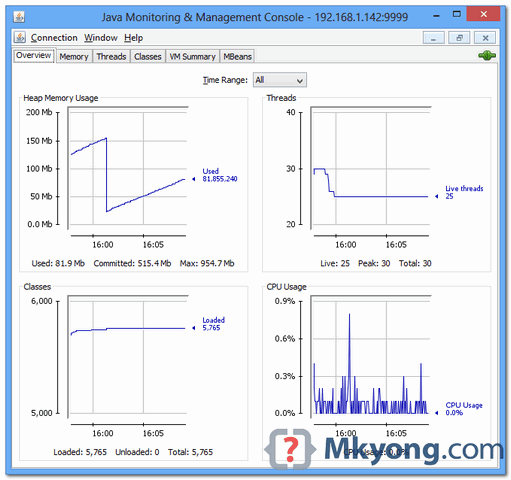Jconsole For Windows 8

Instructions for Windows 8. This step is your final option in trying to resolve your jconsole.exe issue. Reinstalling Windows will erase everything from your. JConsole – JMX remote access on Tomcat. In this tutorial, we will show you how to use jConsole to remote access a. Windows 8 + jConsole + 192.168. Beatles Score Book Pdf on this page. 1.
Using JConsole The JConsole graphical user interface is a monitoring tool that complies to the Java Management Extensions (JMX) specification. JConsole uses the extensive instrumentation of the Java Virtual Machine (Java VM) to provide information about the performance and resource consumption of applications running on the Java platform. In the Java SE 6, JConsole has been updated to present the look and feel of the Windows and GNOME desktops (other platforms will present the standard Java graphical look and feel). The screen captures presented in this document were taken from an instance of the interface running on Windows XP. Starting JConsole The jconsole executable can be found in JDK_HOME /bin, where JDK_HOME is the directory in which the Java Development Kit (JDK) is installed.
If this directory is in your system path, you can start JConsole by simply typing jconsole in a command (shell) prompt. Otherwise, you have to type the full path to the executable file. Command Syntax You can use JConsole to monitor both local applications, namely those running on the same system as JConsole, as well as remote applications, namely those running on other systems. Note - Using JConsole to monitor a local application is useful for development and for creating prototypes, but is not recommended for production environments, because JConsole itself consumes significant system resources.
Remote monitoring is recommended to isolate the JConsole application from the platform being monitored. For a complete reference on the syntax of the jconsole command, see the manual page for the jconsole command: ( or ). Setting up Local Monitoring You start JConsole by typing the following command at the command line.% jconsole When JConsole starts, you will be given a choice of all the Java applications that are running locally that JConsole can connect to. If you want to monitor a specific application, and you know that application's process ID, then you can also start JConsole so that it connects to that application. This application must be running with the same user ID as JConsole. The command syntax to start JConsole for local monitoring of a specific application is the following.% jconsole processID In the command above processID is the application's process ID (PID). You can determine an application's PID in the following ways: • On Solaris, Linux, or Mac OS X systems, you can use the ps command to find the PID of the java instance that is running.
• On Windows systems, you can use the Task Manager to find the PID of java or javaw. • You can also use the jps command-line utility to determine PIDs. See the manual page for the jps tool ( or ). For example, if you determined that the process ID of the Notepad application is 2956, then you would start JConsole with the following command.% jconsole 2956 Both JConsole and the application must by executed by the same user. The management and monitoring system uses the operating system's file permissions. If you do not specify a process ID, JConsole will automatically detect all local Java applications, and display a dialog box that lets you select which one you want to monitor (see ).
For more information, see. Setting up Remote Monitoring To start JConsole for remote monitoring, you use the following command syntax.% jconsole hostName: portNum In the command above, hostName is the name of the system running the application and portNum is the port number you specified when you enabled the JMX agent when you started the Java VM. For more information, see. If you do not specify a host name/port number combination, then JConsole will display a connection dialog box () to enable you to enter a host name and port number. Setting up Secure Remote Monitoring You can also start JConsole so that monitoring will be performed over a connection that is secured using Secure Sockets Layer (SSL).
Comments are closed.